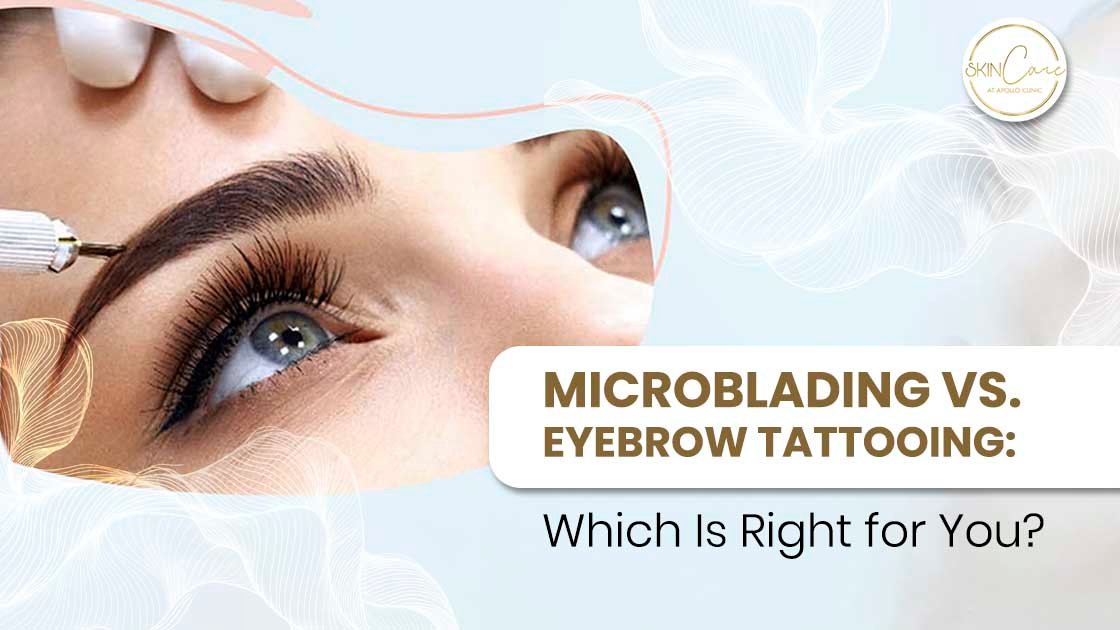Alopecia Areata, a surprisingly common autoimmune condition, manifests as sudden, patchy hair loss on the scalp and occasionally other parts of the body. This form of alopecia can be a distressing experience for those affected, often occurring unexpectedly and progressing rapidly. Understanding this condition is crucial for those seeking to manage its effects and explore treatment options.
While hair loss can stem from various factors, Alopecia Areata stands out due to its autoimmune nature. The condition causes the body’s immune system to mistakenly attack hair follicles, leading to distinct patches of hair loss. Despite its potentially alarming appearance, it’s important to note that Alopecia Areata is not a sign of a more serious underlying health issue.
For those grappling with Alopecia Areata, knowledge is power. By delving into the causes, recognising the symptoms, and exploring available treatments, individuals can take control of their condition. This comprehensive guide aims to shed light on Alopecia Areata, offering insights and hope to those affected by this unique form of hair loss.
What is Alopecia Areata?
Alopecia Areata is an autoimmune malfunction that disrupts the normal hair growth cycle by mistakenly targeting hair follicles as invaders. This immune system malfunction leads to inflammation around the follicles. Consequently, causing hair to fall out in smooth, round patches, typically the size of a coin. While Alopecia Areata most commonly affects the scalp, it can cause hair loss anywhere on the body, including eyebrows, eyelashes, and beard.
Types of Alopecia Areata
The distinct types of alopecia areata affect hair in different ways affecting people in different ways.
Pattern Type
It may include:
- Patchy Alopecia Areata
- Alopecia Totalis
- Alopecia Universalis
Also, the types of alopecia areata vary according to the extent of hair loss and other symptoms. They may also have different treatments and outlooks:
- Patchy alopecia areata is the most common type. Also, it is characterized by one or more coin-sized patches of hair loss on your scalp or body.
- Alopecia total is when you have hair loss across your entire scalp.
- Alopecia universalis type concerns when you lose all hair on your body, including your scalp and face.
- Diffuse alopecia areata is the sudden and unexpected thinning of hair all over your scalp, not just in one area or patch. Also, it may look like female or male pattern hair loss.
- Ophiasis alopecia however causes a band of hair loss along the sides and lower back of your scalp.
Alopecia areata based on gender
Alopecia areata occurs equally in males and females. Also, this condition causes diffuse and patchy hair loss typically confined to a small area. It may occur all at once, or the area may gradually expand, which results in greater hair loss.
Alopecia areata is not, male pattern hair loss, which involves a receding hairline and gradual thinning of hair, all over. Moreover, it is also different from female pattern hair loss, which is a gradual thinning of hair in a large area.
Alopecia areata in children
Alopecia in children is known as early-onset alopecia areata. Also, in addition to hair loss, children may experience nail changes such as pitting or lesions. Moreover, adults may experience nail symptoms, too, but they are likely more common in children. Also, after age 5, hair loss can be traumatising for children as they start noticing differences in their hair compared with others.
Hair Loss: Recognising the Symptoms of Alopecia Areata
The primary symptom of Alopecia Areata is patchy hair loss. These patches can appear suddenly and grow larger over time.
Symptoms of alopecia areata typically start between ages 25 and 36 years. Hair loss can manifest in various ways, and understanding the specific symptoms can be the first step towards a diagnosis. The main symptom of alopecia areata is hair loss that happens in patches of several centimetres or less.
Alopecia areata most often affects your scalp. However, hair loss may also occur in other areas of your body, such as your:
- face
- chest
- back
- arms
- legs
You may lose hair in just a few places, while other people may lose it in more areas. Hair loss is quick for some and gradual for others.
Other symptoms of alopecia areata include:
- an itching or burning feeling in the affected area
- grey or white hairs in the affected area
- nail pitting or lesions
You might also experience:
- Brittle nails with indentations or pits
- Exclamation point hairs – hairs that are tapered at the ends, growing thin at the base and thicker towards the tip.
It’s important to note that Alopecia Areata is not contagious and does not cause any physical health problems beyond hair loss. However, the emotional impact can be significant, leading to anxiety and depression.
The Hallmark Sign: Patchy Hair Loss
The most prominent symptom of Alopecia Areata is distinct patches of baldness. These patches typically appear suddenly, often starting small and round, about the size of a quarter. They can occur anywhere on the scalp or body with hair, including the beard, eyebrows, eyelashes, and even arms or legs.
Beyond Bald Spots: Additional Symptoms
While hair loss is the most noticeable symptom, Alopecia Areata can sometimes present with other signs:
- Exclamation Point Hairs: These hairs are thin at the base and grow thicker towards the tip, resembling an exclamation point (!).
- Nail Changes: Brittle nails with indentations or pits are a common occurrence in Alopecia Areata.
- Itching or Burning: Some people experience itching or burning sensations in the areas where hair loss is about to occur.
Remember, Alopecia Areata is not contagious. It doesn’t cause any physical health problems beyond hair loss. However, the emotional impact can be significant, leading to anxiety and depression.
Causes and Risk Factors of Alopecia Areata
While we don’t know the exact culprit behind alopecia areata, researchers have pieced together some key suspects.
Here’s what we know so far:
- The Autoimmune Connection: Alopecia areata is an autoimmune disease, where the body’s defence system mistakenly attacks healthy tissues. Consequently, the immune system targets hair follicles, causing them to shrink and stop hair production, leading to hair loss.
- Genetics Play a Role: Family history or genetics is a factor. So, having a close relative with alopecia areata increases your chances of developing it. Also, scientists are exploring specific genes that might be involved.
- Environmental Triggers: Stressful events or illnesses that act as catalysts for the underlying genetic predisposition may also cause Alopecia areata.
- The Autoimmune Link: Also, Alopecia areata often appear alongside other autoimmune conditions like vitiligo, lupus, or thyroid disorders. Also, this suggests a potential overlap in genetic risk factors.
- Beyond Genetics: Moreover, health conditions like Down syndrome or thyroid disease, as well as deficiencies in some vitamins and minerals, may also contribute to alopecia areata.
- Treatment-Induced Hair Loss: A specific type of alopecia areata is due to the medication nivolumab, used to treat some cancers,
Shedding Light on Hair Loss Common Causes
Hair loss – it’s a concern that can leave you feeling traumatised. Of course, shedding a few strands here and there is normal, however, seeing more hair in your brush than on your head can be a real head-scratcher (pun intended!). So, let’s understand the mysteries behind hair loss and identify the eight sneaky suspects causing your precious strands to vanish.
1. The Family Curse: Genetic Hair Loss
Genetic hair loss is the most common reason, affecting both men (think “male pattern baldness”) and women (hello, “female pattern hair loss”). Therefore, if you have a family history of thinning hair, you might be more sensitive to a hormone called DHT. This hormone shrinks hair follicles and shortens their growth cycle, leading to a gradual retreat.
2. Time Takes a Toll: Age-Related Hair Loss
All of us gracefully (or not so gracefully) age. So, our hair growth slows down like a record player on its last leg. Consequently, hair follicles become less productive, producing thinner strands and leading to a general decrease in hair volume.
3. Medical Mischief: Conditions and Treatments
Medical conditions like thyroid trouble, nasty scalp infections, and even autoimmune diseases like alopecia areata can disrupt hair growth. Also, medical treatments like chemo and radiation can cause temporary or permanent hair loss.
4. Hormonal Havoc:
Yes, hormonal disorders can wreak havoc on your hair. Also, pregnancy, childbirth, menopause, and PCOS can all cause hair loss due to hormonal imbalances. So, if your hairfall occurs during these times, you’re not alone!
5. Stressed Out, Hair Falling Out?
Are you feeling overwhelmed? Your hair might be feeling the heat too! Also, during stressful periods, the body diverts resources away from hair growth, leading to temporary shedding. Therefore, take a deep breath, relax those shoulders, and maybe your hair will follow suit.
6. Nourishment Needed: Nutritional Deficiencies
Did you know our hair thrives on a balanced diet? Therefore, a lack of essential nutrients like iron, protein, biotin, and zinc can hinder hair growth and contribute to loss. So, fuel your body with the good stuff to keep your locks luscious.
7. Haircare Horror Shows: Hairstyles and Practices
Resorting to tight hairstyles like braids or ponytails that pull on the scalp can lead to traction alopecia. Similarly, overdoing heat-styling tools, harsh chemicals, and excessive bleaching can damage hair and promote breakage. So, be gentle with your mane, and it will thank you for it!
8. Trichotillomania: The Hair-Pulling Habit
Well, this is a mental health condition where someone has an irresistible urge to pull out their hair.Also, it can lead to patchy bald spots and needs professional help.
Remember, if you’re experiencing hair loss, consulting a cosmetologist is crucial to identify the culprit and explore treatment options. With the right knowledge and a little TLC, you can get your hair back on track and feel confident once again!
Treatment Against Alopecia Areata
There may not be a magic cure button for Alopecia Areata, but there are plenty of warriors in your treatment arsenal! So, get set to explore the different weapons you can wield to fight back and potentially regrow hair:
Medications:
- Topical Strike Force: Some creams and ointments get the job done! Also, Minoxidil (though not specifically FDA-approved for alopecia areata) and corticosteroids can stimulate hair growth and reduce inflammation.
- Immunotherapy: Outsmarting the System: Yes, topical immunotherapy tricks your immune system. They create a controlled allergic reaction in the treatment area. Also, this might convince it to leave your hair follicles alone and promote regrowth.
- Light Therapy: Shining a Light on Hope: Ultraviolet (UV) light therapy is a popular way to suppress overactive immune system activity and encourage hair growth.
Injection Power:
- Corticosteroid Injections: Precision Strikes: This can be used for mild, patchy alopecia, where steroid injections can be a bullseye! In this treatment tiny needles deliver a targeted dose of medication directly to bald spots, promoting hair regrowth.
Oral Options:
- JAK Inhibitors: New Recruits: Hair regrowth can be boosted by this newer weapon, working by reducing inflammation-causing cytokines in your body.
- Immunosuppressants: Heavy Artillery: Use with caution as these medications can be very effective, but come with potential side effects. Also, discuss them carefully with your doctor.
Natural Allies :
- Dietary Changes: You can start an anti-inflammatory diet rich in fruits, vegetables, lean proteins, and healthy fats that might help reduce the body’s autoimmune response and potential hair loss.
- Alternative Therapies: Not proven cures, but, stress reduction techniques, acupuncture, or certain vitamins and supplements might offer some general well-being benefits.
Therefore, finding the right treatment can be a journey of trial and error. Also, there’s no one-size-fits-all approach, but with the right treatment, you can fight against alopecia areata and potentially see your hair flourish again.
Conclusion
Alopecia areata can be a surprising and stressful experience. However, you can manage this condition and live confidently with the right knowledge and support. While there is no cure, various treatment options can stimulate hair regrowth and improve your overall experience. If you’re experiencing hair loss, consulting a hair specialist doctor is crucial.
Don’t let alopecia areata hold you back. Take charge of your hair health and embrace your inner and outer beauty! Remember, you’re not alone. Here at Skincare at Apollo with Dr. Snehi K. Sharma, we understand the impact of alopecia areata and are dedicated to providing treatment plans to help you achieve the best possible results.
If you’re experiencing hair loss consistent with alopecia areata, schedule a consultation with Dr. Sharma today. We can help you explore your treatment options and develop a plan to get you on the road to hair regrowth and renewed confidence.
Call us at +91 9085645000 to book your appointment. Don’t wait to take charge of your hair loss journey.






